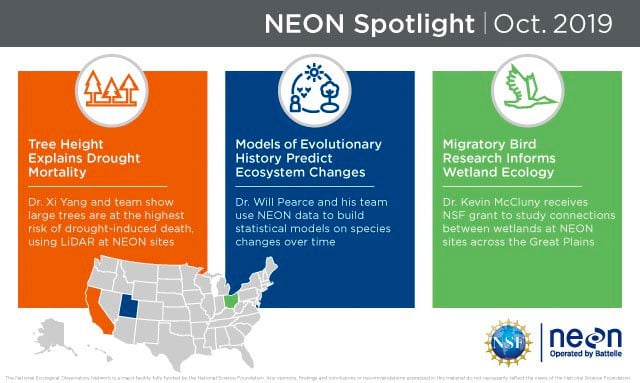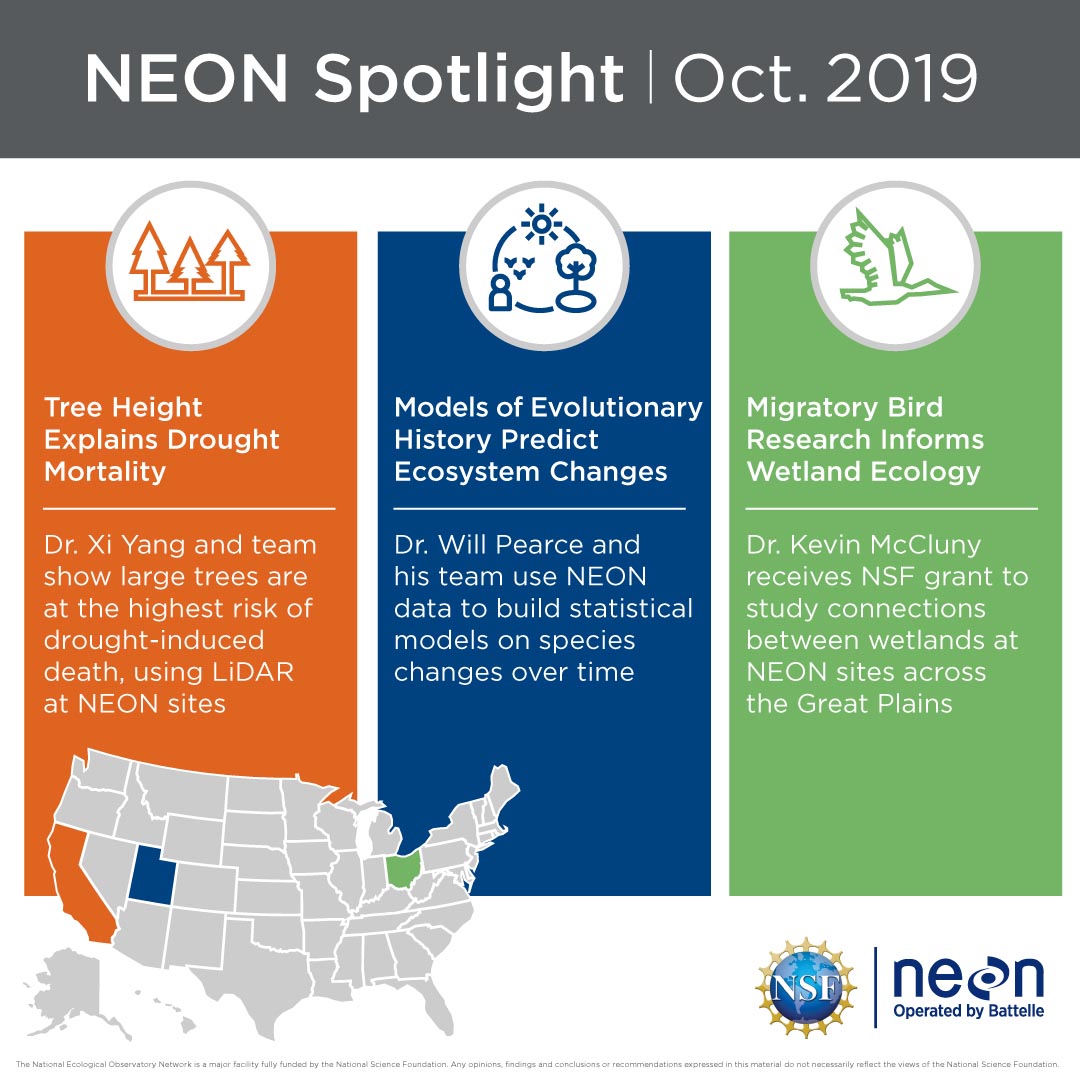What's New with NEON?

Every day, scientists and researchers across the country are making discoveries and advancing our understanding of long-term ecosystem changes. Through collaboration with the National Ecological Observatory Network (NEON), these scientists are building a comprehensive data repository that will enable us to tackle tough questions at a previously inaccessible scale. Stretching across 81 sites and with a decades-long timeframe, NEON research is empowering the user community with open-access data to inform a wealth of ecological studies.
That’s why we’re unveiling the NEON Spotlight, a monthly roundup of exciting research conducted under the auspices of NEON or with data generated by the program. From soil ecology to plants and animals to atmospheric conditions, researchers are exploring all aspects of ecosystem changes utilizing NEON sites and data.
This Month’s Spotlight
Our inaugural edition covers news from October 2019. Among the many NEON research efforts underway, we highlight the following:
-
A study led by Will Pearse of Utah State University is using NEON data to quantify the roles of different variables in the assembly of ecological communities. He and his students are working to build better models of community assembly to better predict the species that will occur in different ecosystems, the traits that these species will have, and how changes in climate may impact species spread and diversity in the future.
-
Dr. Xi Yang, PhD and a professor at the University of Virginia, tracked the mortality rate of nearly 2 million trees in California over 8 years, showing that tree height is the strongest predictor of mortality during extreme drought. These findings suggest that future persistent drought may have widespread adverse impacts on the largest trees on Earth.
-
The NSF awarded a four-year, $780,000 macrosystems grant to Dr. Kevin McCluney, assistant professor of biological sciences at Bowling Green State University, to fund research on how birds and their migratory patterns, wind, and climate link 25 prairie playas across the Great Plains. By studying these playas, chosen for their proximity to NEON sites, this research will investigate how the ecology of this large system of wetlands changes over time.
You can find the NEON Spotlight every month at Inside Battelle, and also on our social media channels. For more information about NEON, visit NEONscience.org.

BATTELLE UPDATES
Receive updates from Battelle for an all-access pass to the incredible work of Battelle researchers.